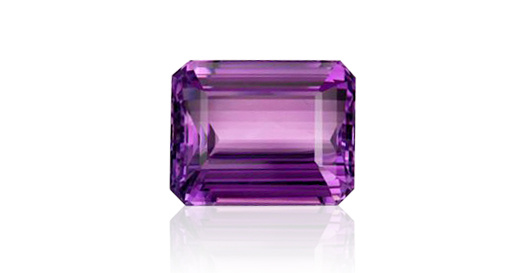Stay in Touch
Get sneak previews of special offers & upcoming events delivered to your inbox.
Sign in
Stone Information & Mining
Amethyst is the purple variety of the quartz mineral species. It’s the gem that’s most commonly associated with the color purple, even though there are other purple gemstones such as sapphire and tanzanite. Its purple color can be cool and bluish, or a reddish purple that’s sometimes referred to as “raspberry.”
Legend & Lore
Because of its wine-like color, early Greek legends associated amethyst with Bacchus, the god of wine. Other legends reflected beliefs that amethyst kept its wearer clear-headed and quick-witted in battle and in business affairs. Fine amethysts have been set in religious jewelry and royal crown jewels for ages. It was once considered equal in value to ruby, emerald, and sapphire. It’s no wonder that fine amethyst adorns the fingers of bishops as well as the coronation regalia of British royalty.
Color
Amethyst’s purple color can range from a light lilac to a deep, intense royal purple and from brownish to vivid. Amethyst also commonly shows what is called color zoning, which in the case of amethyst usually consists of angular zones of darker to lighter color.
Cleaning
Amethyst can be safely cleaned with warm soapy water. Ultrasonic cleaners are usually safe except in the rare instances where a stone is dyed or treated by fracture filling. Steam cleaning is not recommended, and amethyst should not be subjected to heat.
This information was excerpted from the GIA's Gem Encyclopedia with permission from the GIA.
Get sneak previews of special offers & upcoming events delivered to your inbox.
*You're signing up to receive QVC promotional email.
Find recent orders, do a return or exchange, create a Wish List & more.
Privacy StatementGeneral Terms of Use
QVC is not responsible for the availability, content, security, policies, or practices of the above referenced third-party linked sites nor liable for statements, claims, opinions, or representations contained therein. QVC's Privacy Statement does not apply to these third-party web sites.
© 1995-2024 QVC, Inc. All rights reserved. | QVC, Q and the Q logo are registered service marks of ER Marks, Inc. 888-345-5788
